Beginner's Guide on How to Use Digital Scales for Food
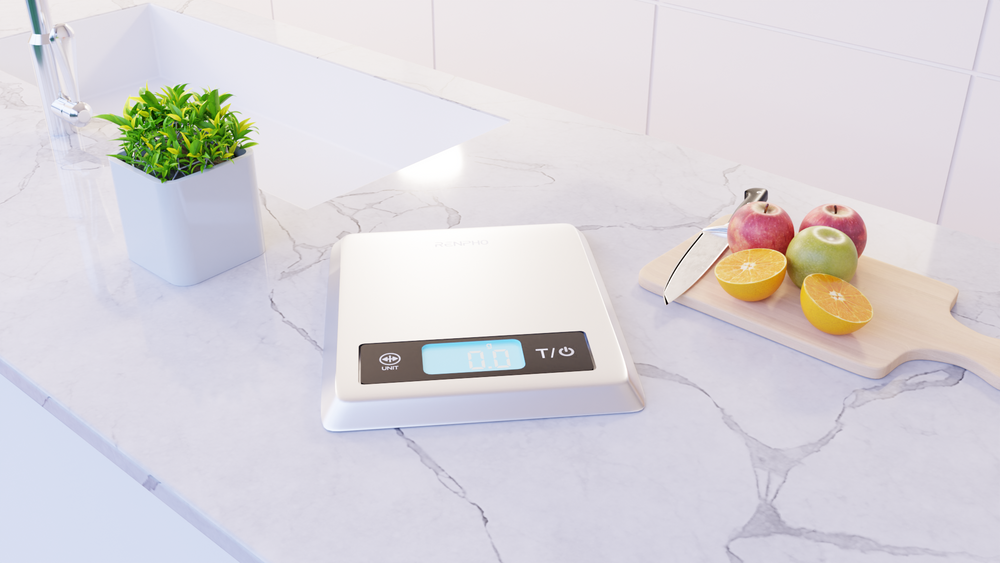
Stay tuned to our latest news
When it comes to cooking a delicious dish, measurements can make or break a recipe. Fortunately, digital scales have emerged as indispensable tools for home cooks and professional chefs alike. Now, relying solely on measuring cups just isn’t the standard practice, as these devices offer a level of accuracy and consistency that elevates your cooking and baking endeavors to new heights.
However, if you haven’t used a digital scale for food prep before, this beginner's guide will provide you with the necessary steps to use them effectively.
So, whether you're a health-conscious individual meticulously portioning your meals, a passionate baker seeking create delicious pastries, or simply someone who loves to cook, this blog will equip you with the knowledge and skills to harness the full potential of digital scales in your culinary pursuits.
Why Should I Weigh My Food?
Weighing your food is a common practice among those conscious about their diet and nutrition. It goes beyond knowing the weight of your food, becoming a popular strategy for tracking food intake in weight management, portion control, and overall health purposes.
So, if you are trying to lose weight, gain muscle mass, or simply maintain a healthy lifestyle, a digital scale can provide a more accurate measurement of your calorie and nutrient intake. If done regularly, this practice can help you better understand your eating habits, make more informed food choices, and ensure you are consuming the right portion sizes. In short, by weighing your food, you can also achieve consistency in your dietary habits, which can lead to better results in reaching your health and fitness goals.
Why Measuring Cups Aren't Enough?
While measuring cups have been a common tool in the kitchen for decades, they often fail to provide accurate weight measurements. This can lead to inaccuracies in ingredients such as flour, sugar, and liquids, causing failed recipes due to incorrect ratios and inconsistent results. For example, a cup of packed flour will weigh more than a cup of sifted flour, leading to variations in the amount of flour used in a recipe.
On the other hand, using a kitchen scale allows for precise measurements by weight, ensuring that the exact amount of each ingredient is used in a recipe. This level of accuracy can greatly improve the overall success of recipes, leading to consistent and reliable results every time.
Incorporating a kitchen scale into your cooking and baking routine provides the benefit of achieving greater precision in ingredient measurements, resulting in more consistent and reliable outcomes in your culinary creations. By using one, you can have confidence in the accuracy of your ingredient measurements, reducing the likelihood of failed recipes and ensuring the success of your culinary endeavors.
Is It Better to Weigh Food Cooked or Raw?
Weighing cooked food versus raw can have a significant impact on the accuracy of tracking caloric intake. When cooked, its weight changes due to the loss of moisture. For example, a raw chicken breast may weigh 8 ounces, but after cooking, it may only weigh 6 ounces due to the loss of water. Additionally, cooking methods such as frying or grilling can add oils or fats to the food, increasing its weight and calorie content. On the other hand, by weighing food raw, you can ensure a more accurate measurement of its caloric content, as the weight will not be affected by cooking methods or loss of moisture. This method allows for a more precise tracking of calorie intake, which is especially important for those trying to manage portion sizes for weight loss or fitness goals. |
How to Use a Food Scale Properly
Utilizing a food scale properly ensures that you are consuming the correct serving sizes and maintaining a balanced diet. But if you are not familiar with how to use a digital kitchen scale, let's dive into the details of how to use a food scale properly.
-
Choose the Right Scale
When choosing the right food scale, several factors need to be considered. First, consider the capacity of the scale, ensuring that it can handle the amount of food you typically need to weigh. Next, accuracy is essential for precise measurements, especially for those following specific dietary requirements or recipes. Ease of use is also important, with features such as a clear display, easy-to-clean surface, and intuitive controls making the scale user-friendly.
-
Read the Manual
Once you have your digital food scale, it is important to read the manual that comes with it in order to understand its specific features. If your scale has advanced functions such as calorie measurements and nutritional values, the manual will provide detailed instructions on how to use these features effectively.
Additionally, the manual will guide how to easily read the digital display, especially when using a large mixing bowl on top of the scale. Understanding the display will ensure accurate measurements of ingredients.
Remember that following the instructions in the manual will help you make the most of your scale’s features and ensure accurate measurements when adding ingredients to your recipes.
-
Clear the Scale
Before using the scale, it is important to clear it by zeroing it out. This ensures that the scale is ready for accurate measurements. To clear the scale, turn it on and wait until the display registers 0, or turn a knob on the scale to calibrate it to 0. This step is crucial for obtaining precise measurements of the food you are weighing.
Different types of food scales may have specific instructions for zeroing out the scale, so it is important to follow the manufacturer's guidelines for your particular scale. Some scales may require a different process to calibrate to 0, so be sure to consult the user manual for proper instructions. Once the scale is cleared and calibrated, you can begin weighing your food.
Following these steps will ensure that your scale is set to accurately measure the weight of your food. By zeroing out the scale and calibrating it to 0, you can have confidence in the precision of the measurements. So, take the time to clear the scale before using it, and enjoy the accurate and reliable measurements it provides.
-
Position the Scale Properly
When using a scale, it is crucial to position it properly to ensure accurate weight readings. Start by placing the scale on a stable, level surface to prevent any wobbling and ensure the platform and weight plates are level. This will help prevent inaccuracies in the measurements. It is also important to use a firm, stable surface to support the scale and prevent any movement during measurement. This will help to maintain the accuracy of the readings and ensure that the scale is functioning correctly. By following these instructions and positioning the scale properly, you can trust that the weight readings are accurate and reliable. So, when using a scale, always remember to place it on a stable surface to achieve the most precise results.
-
Tare the Scale
Tare the scale by placing an empty bowl or plate on it and pressing the "tare" button to reset it to zero. This will ensure that only the weight of the ingredients is measured when adding them to the bowl or plate. Once the scale is reset, you can proceed with adding your ingredients and accurately measuring their weight. Make sure to use the tare function each time you add a new ingredient to the bowl or plate, so you are only measuring the weight of the additional ingredient and not the combined weight with the previous ingredients. This will help ensure the accuracy of your measurements and ultimately the success of your recipe. Doing so before each new ingredient allows you to easily keep track of the weight of each component, making it easier to adjust the recipe as needed. So, remember to always tare the scale before adding your ingredients to accurately measure their weight.
-
Place the Food in the Container
To ensure accurate measurements, it's important to place the food in the container correctly. Start by taring or getting the weight of your container on the scale. Once the scale reads zero with the container on it, you can begin adding your ingredients or food items one at a time. It's essential to write down the readings as you go to avoid confusion. If your scale doesn't have a tare button, make sure to weigh the container first and then subtract that weight from the total measurement to get accurate readings for your ingredients. By following these steps, you can ensure that the measurements for your recipe or food preparation are precise and reliable. Remember to use keywords such as container, ingredients, food items, taring, and accurate measurements to guide the process. Following these instructions will help you achieve the desired results for your culinary creations.
-
Calculate the Actual Weight
To calculate the actual weight of products, begin by placing the container on the scale and recording its mass. Next, add the food or ingredients to the container and obtain the weight reading. To determine the actual weight of the product, subtract the mass of the container from the weight reading. This will provide an accurate measurement of the product's weight without the container included.
To ensure accuracy, it's crucial to obtain the correct reading when adding the food or ingredient to the container. Additionally, the taring process can make this step unnecessary by automatically subtracting the mass of the container from the weight reading, providing the actual weight directly.
By following these steps and utilizing the taring process, the actual weight of products can be accurately calculated, allowing for precise measurements in various applications.
Takeaway
Digital scales have revolutionized cooking by providing accurate and consistent measurements that traditional measuring cups can't match. This beginner's guide equips you with the necessary steps to use them effectively. Weighing your food is essential for those conscious of their diet and nutrition, helping with portion control, weight management, and making informed food choices. Measuring cups often fall short of providing accurate measurements, leading to inconsistent results. Digital scales offer precise measurements by weight, ensuring the exact amount of each ingredient is used, resulting in consistent and reliable cooking outcomes. By following steps like choosing the right scale, reading the manual, clearing and positioning the scale properly, taring it, placing food correctly, and calculating the actual weight, you can achieve accurate measurements and precise results in your recipes. Embrace the transformative power of digital scales and elevate your culinary skills with confidence.
Renpho Health Tips
-
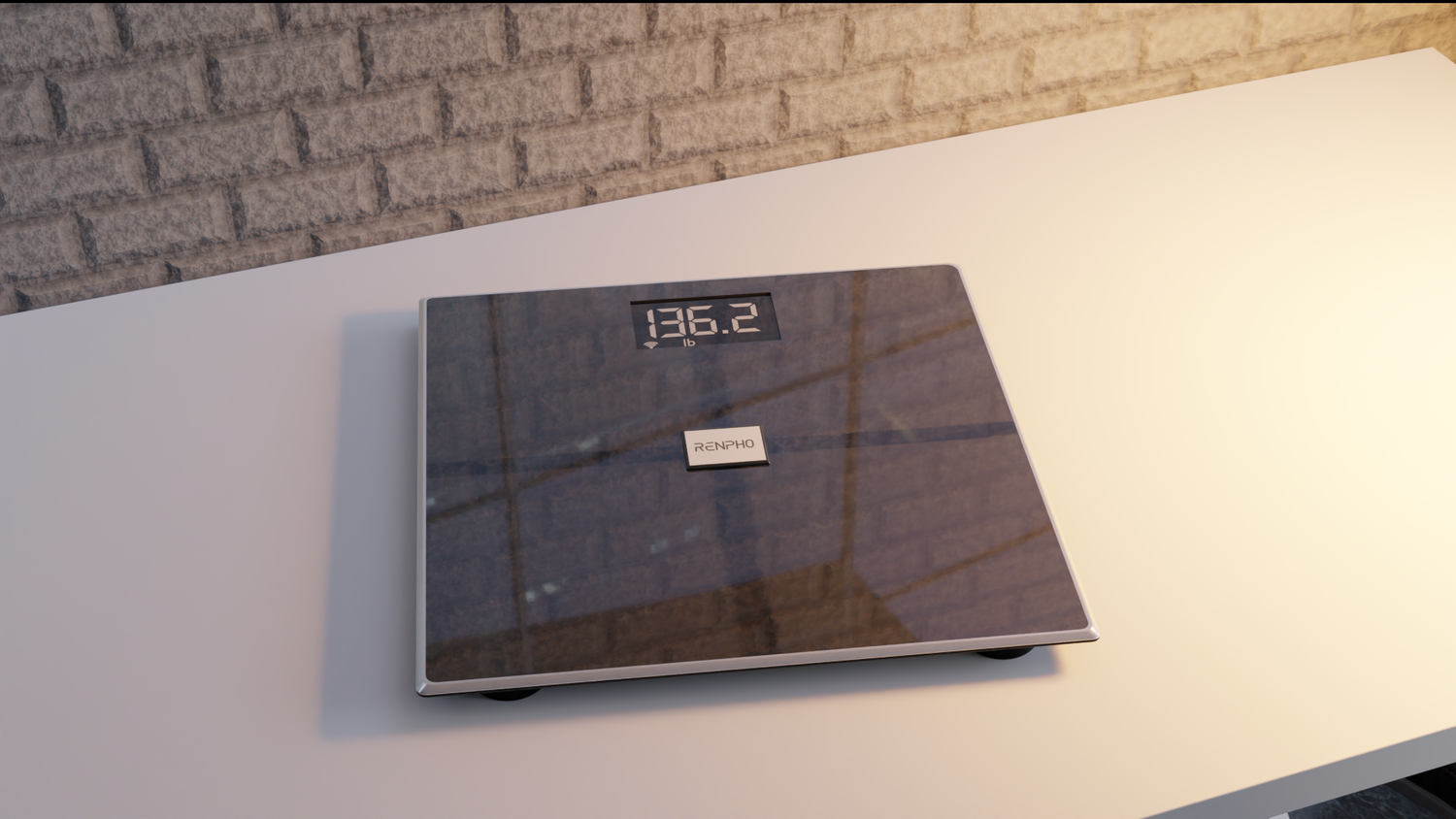
5 Reasons Why Your Digital Scale Is Inaccurate
January 12, 2024
Read more >
-
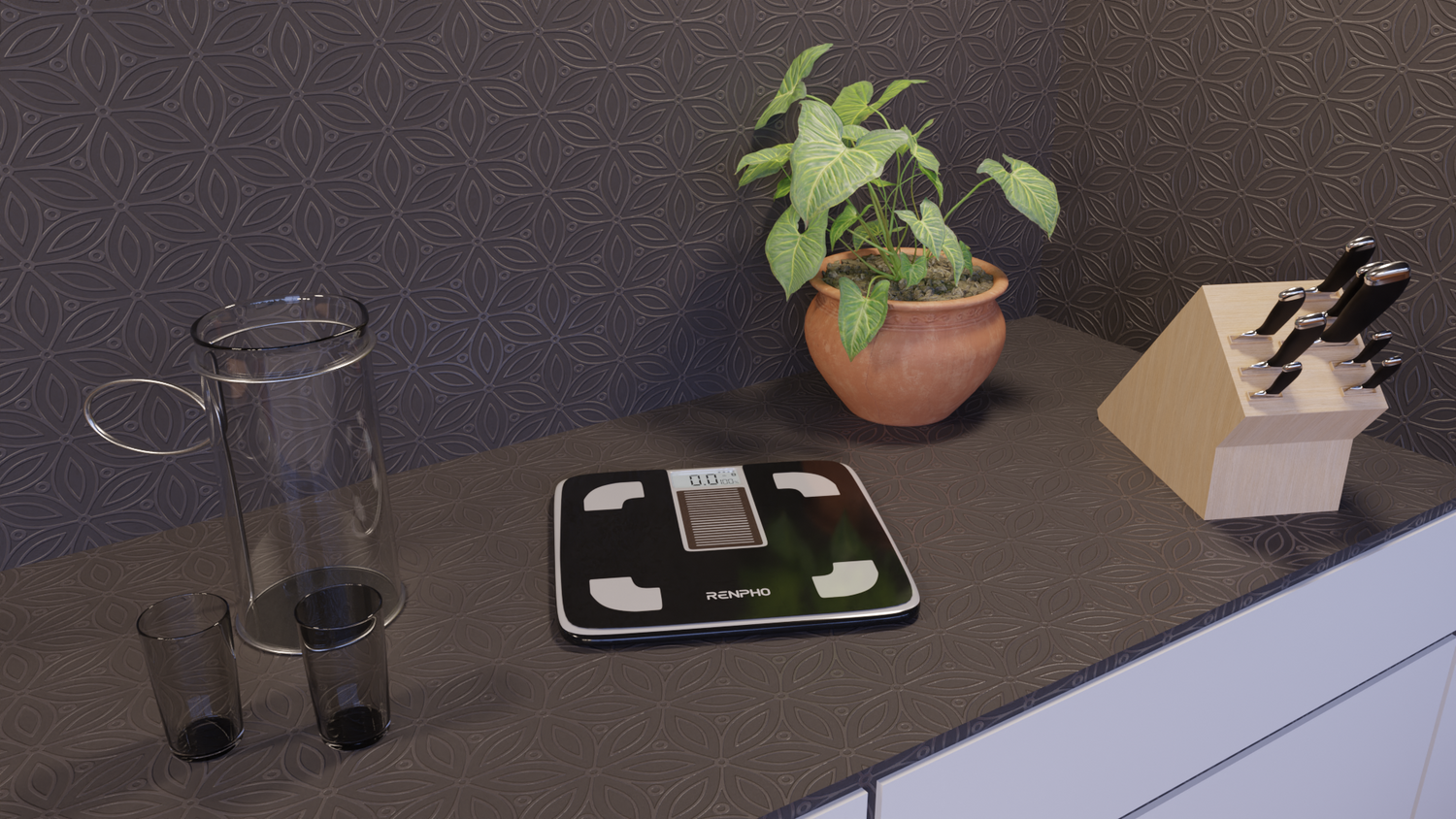
Can Smart Scales Help You Determine if You're Dehydrated?
January 11, 2024
Read more >
-
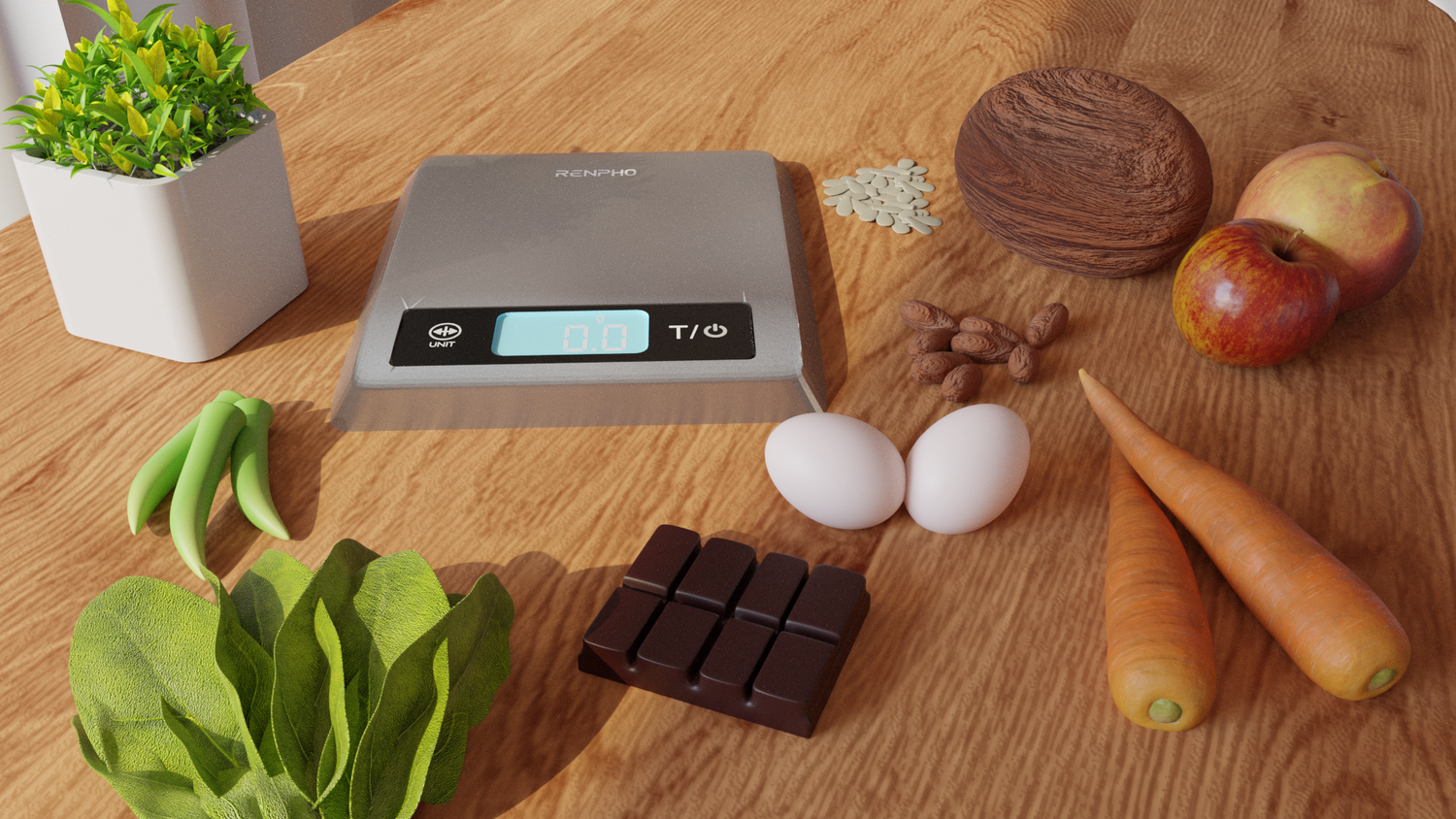
10 Fiber Foods You Can Add to Your Weight Loss Diet
December 21, 2023
Read more >
-
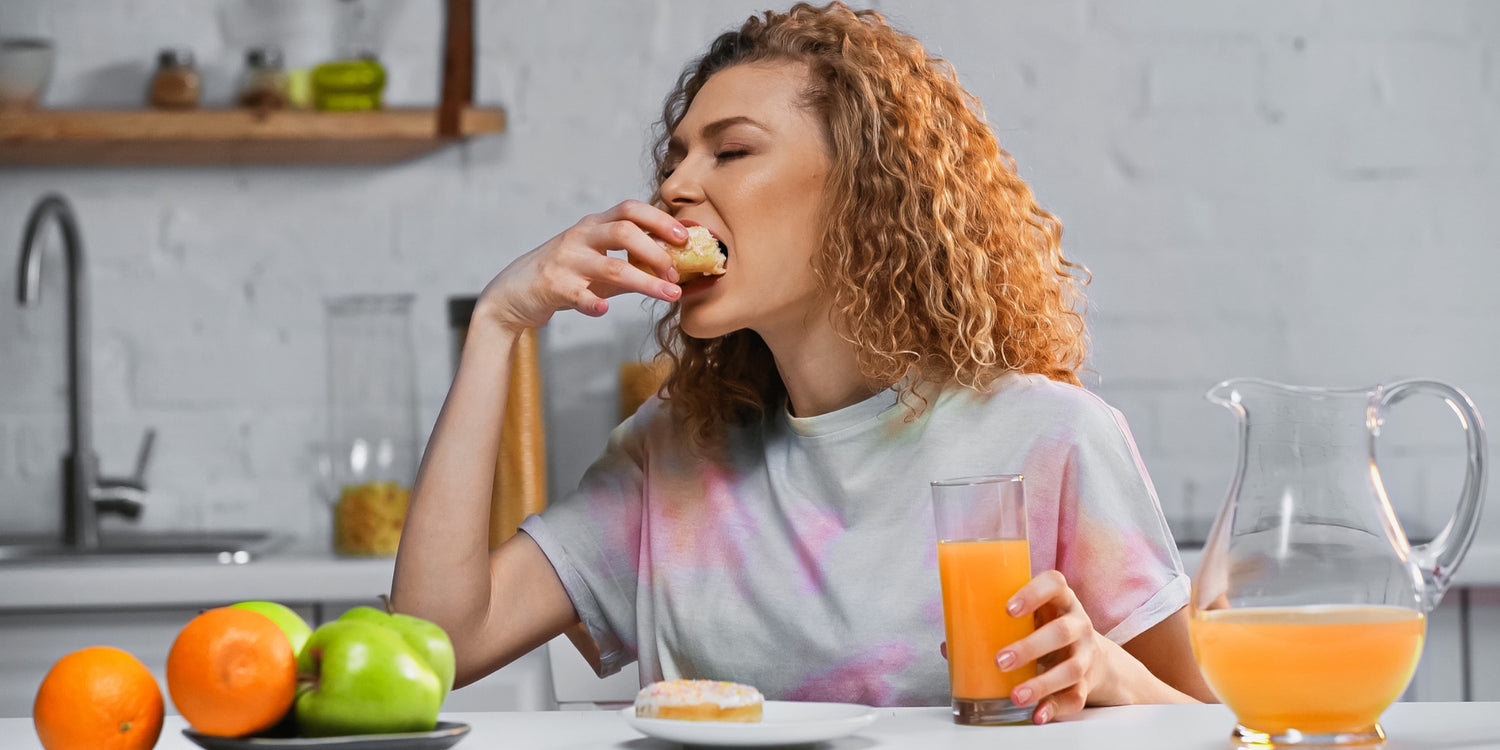
How Food Can Make You Happy or Sad: The Science Behind the Mood-Food Connection
December 20, 2023
Read more >
-

Weight Wellness Through the Lens of Mindful Eating
November 19, 2023
Read more >




